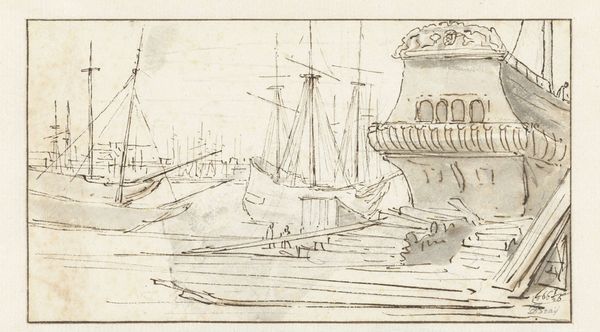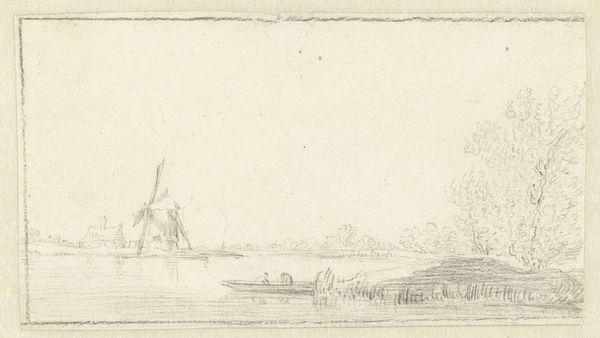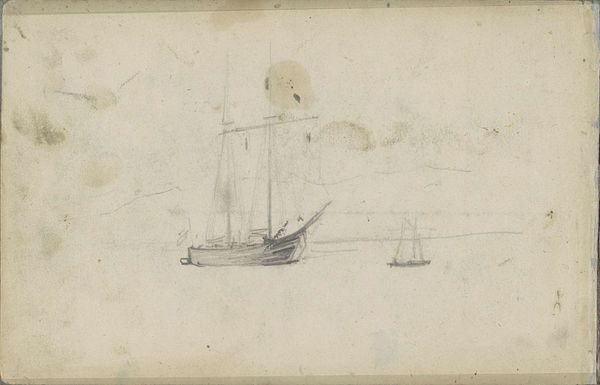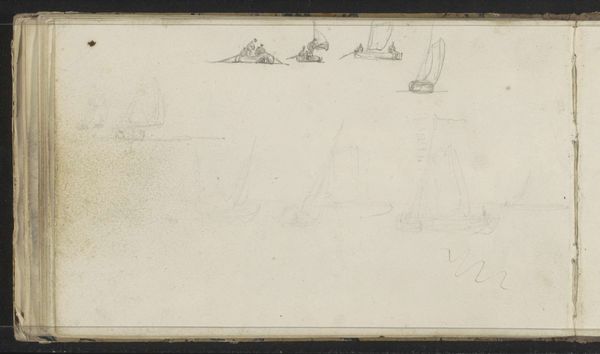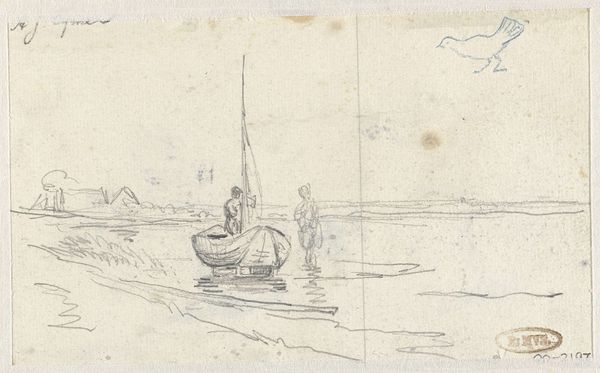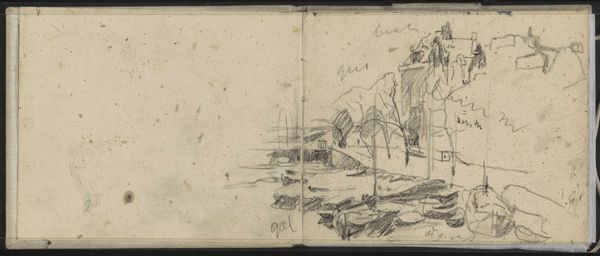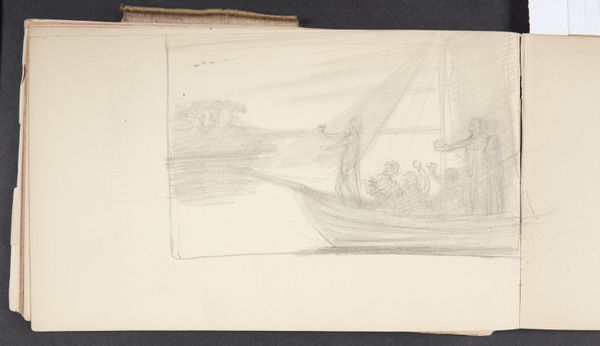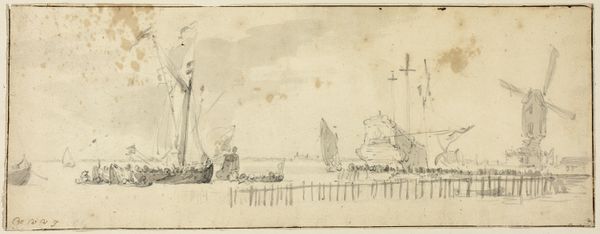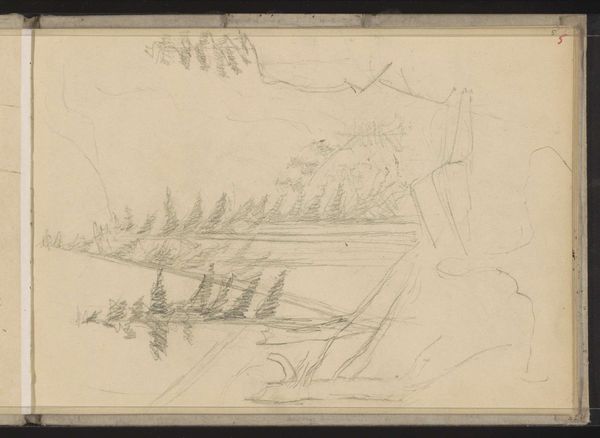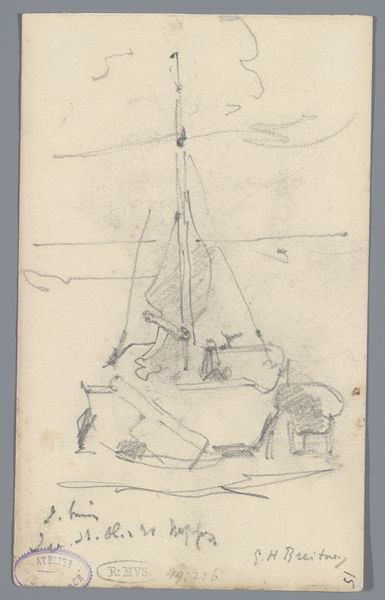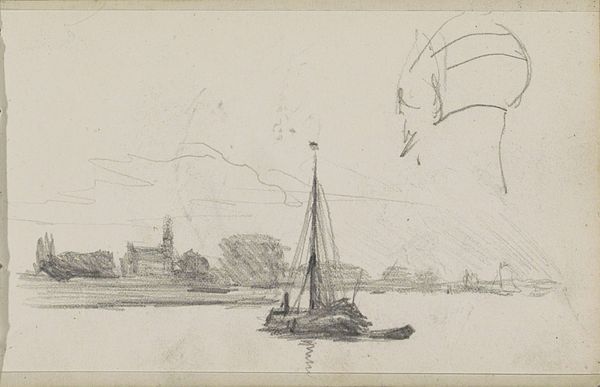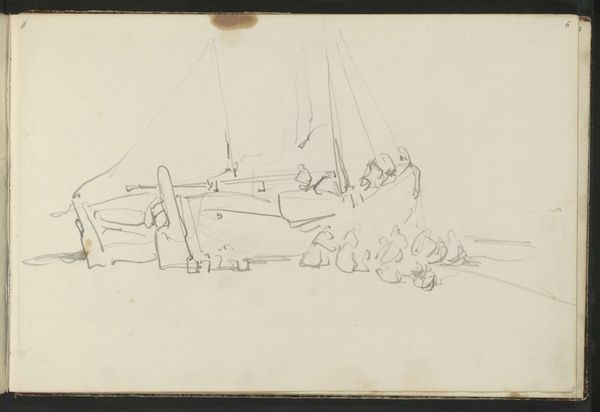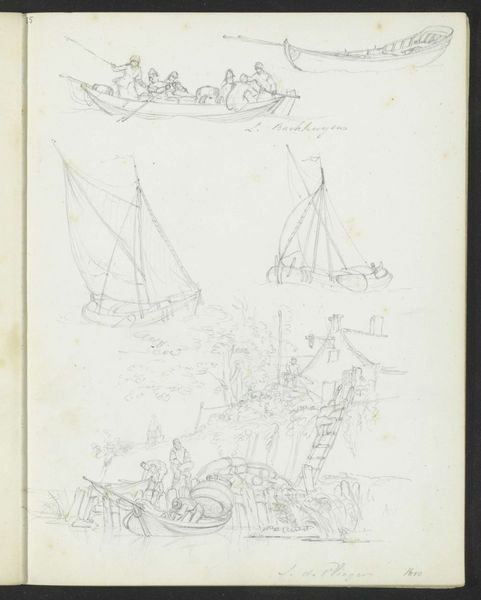
Zeilschepen op een rivier bij een gebouw met vijf torens 1864 - 1880
0:00
0:00
Copyright: Rijks Museum: Open Domain
Curator: Right, let's take a look at this drawing by Johannes Tavenraat, titled "Zeilschepen op een rivier bij een gebouw met vijf torens," which translates to "Sailing ships on a river near a building with five towers." It's currently held here at the Rijksmuseum and was likely made between 1864 and 1880. It's an ink and pen sketch on paper. Editor: Hmm, there’s a kind of quiet busyness about it, you know? Like a memory gently resurfacing. It feels very dreamlike and fleeting because it is more of a collection of fleeting drawings. Curator: That’s an astute observation. Tavenraat was part of a generation that witnessed rapid industrialization, and here we see him perhaps yearning for simpler times, representing daily life. Note how he’s used swift, almost shorthand lines, which allow you to capture fleeting moments with immediacy, while he still manages to depict detail in the sail rigging or in the architecture of the building. Editor: Exactly! The building, it feels a little like a stage set – almost as if the structure’s been quickly jotted to provide just a whisper of context, giving scale to the ships. They all appear separate, like sketches from a travel journal on a single sheet of paper, the page acting like a kind of diorama stage where all of these fleeting scenarios can come alive, creating a sense of journey for him as the artist. Curator: Certainly. Also it demonstrates a technique that was quite popular among artists. Many, in preparation for larger works, or even as artworks, worked to capture several impressions of locations they experienced and it also demonstrates a knowledge of the Golden Age works of masters such as van Goyen. It shows how thoroughly embedded such artists are into a Dutch landscape tradition. Editor: I feel a gentle melancholy here. The lack of deep shadow perhaps emphasizes a nostalgic yearning, maybe reflecting the slow move into modernity, capturing this way of life on the water and in the countryside. Curator: Indeed, it invites us to reflect on the transformations within 19th-century Dutch society and how artists engaged with those shifts through their craft, and it captures these scenes with skill and consideration. Editor: Beautiful, so full of suggestion, an ode to everyday experience.
Comments
No comments
Be the first to comment and join the conversation on the ultimate creative platform.
